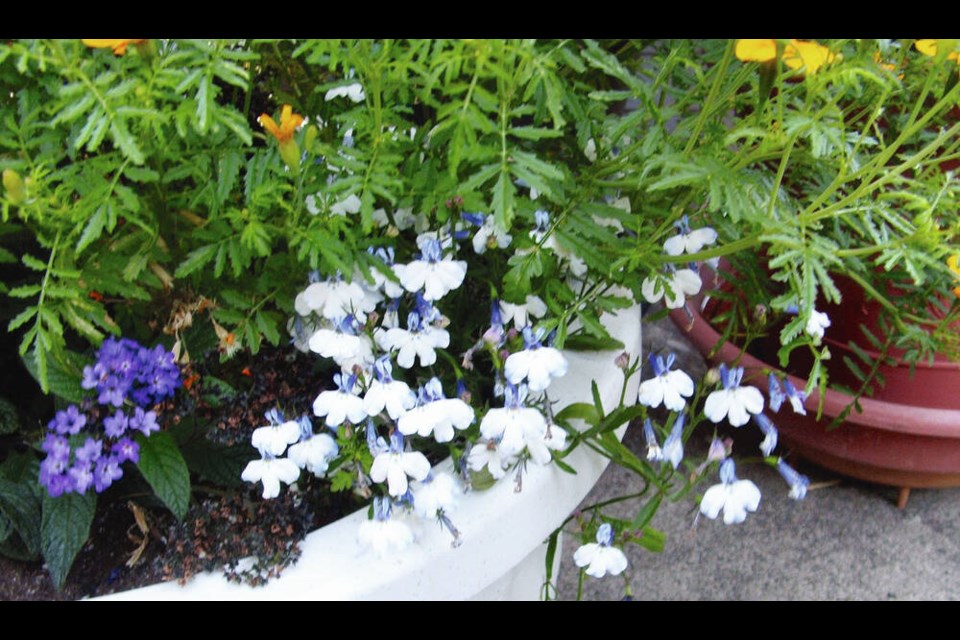Dear Helen: I have been disappointed by the flowers on my seed-grown Oklahoma Salmon zinnia transplants. The seed packet described the bloom colour as a blend of warm pinks and corals. The first flowers that opened were bright yellow. They were followed by more in yellow. Soon after, I saw flats of Oklahoma Salmon zinnias, also with bright yellow flowers, at a garden centre. Can you explain this?
J.C.
Though it almost never happens, the seed packet you purchased might have contained the wrong colour variety. In the Oklahoma Series of zinnias there is also a Golden Yellow.
This is a rarity. I has happened to me only once in over four decades of gardening.
It is more likely that your Oklahoma Salmon plants will be one of those varieties with flowers that change colours, developing new tones as the blooms age and also with weather changes.
Last year, I grew a marigold with this colour-changing habit. Marigold Strawberry Blonde blooms opened in deep coral-orange and slowly changed to shades of cream, creamy pink, and gold.
I hope, as your blooms develop, you’ll begin to see the colours you were anticipating.
Dear Helen: I have heard that it is possible to grow pomegranates in Victoria. Is this true?
M.S.
Most pomegranates need temperatures that don’t fall below 10 C, but there is a Russian variety that is reputed to be hardy to around -15 C.
The best source of information on growing warm-climate fruits is Fruit Trees and More in North Saanich. Their website (fruittreesandmore.com) lists pomegranates with its Warm-temperate & Mediterranean / Sub-tropical fruit trees. The site includes phone and email contact for information on availability and growing.
Dear Helen: What should I do with my raspberries after they stop producing berries? I’ve never quite understood how best to manage the canes and the planting has become quite crowded with newly produced canes. The ones I grow produce only the one, early summer crop.
P.B.
When berry production ends, cut the canes that have borne the berries down to the ground. Then, thin the new canes to leave only the strongest, with enough spacing between them to allow for good air circulation and full exposure to sunlight.
With the thinning done, water the planting well before mulching the canes generously with a nourishing compost.
Dear Helen: I am very fond of petunias and lobelia, but find them both to be fussy growers. Are there ways to produce flower-filled plants through the summer?
J.A.
With lobelia, I’ve found that the plants and flowers tend to fry in direct, hot sun. My favourite lobelia is the trailing Blue Splash in the Regatta Series. It’s grown and bloomed well for me in part and dappled sun.
Lobelia is commonly used in mixed containers of flowers. The lobelia will continue to thrive and bloom through the summer where the containers are in a location the receives full morning sun only and partial shade in the afternoon.
Easy success with petunias has come with variety choices that have been honed over years of trying different varieties.
I still try one or two new introductions each year, but the star of my petunia show has been, ever since its introduction as an All-America award-winning flower in 2002, Tidal Wave Silver. It has never failed to produce a long season of trailing stems bearing silvery lavender flowers in raised patio containers.
Another favourite for its large blooms in deep, velvery blue is Blue Morn in the Sophistica Series. The online catalogues of Stokes Seeds and T&T Seeds usually list this petunia. Tidal Wave Silver seed is widely available.
Dear Helen: What is your opinion on leaving lawns unwatered and letting them turn brown for the summer? I tried it. Weeds took over.
D.L.
I tried it once also, and have since opted to water only once a week at most. My “lawn” is actually a wild mix of grass with plenty of clover, English daisies, creeping thyme, calamint, baby’s tears and other assorted small, flowering plants that most would consider lawn weeds.
It’s wonderfully low-maintenance, needing few mowings over the growing season. The little flowers attract flying insects. I think of this odd ground cover of mixed plants my “eco-friendly” lawn. Bunnies forage in it daily — distracting them from the beans, I hope.



